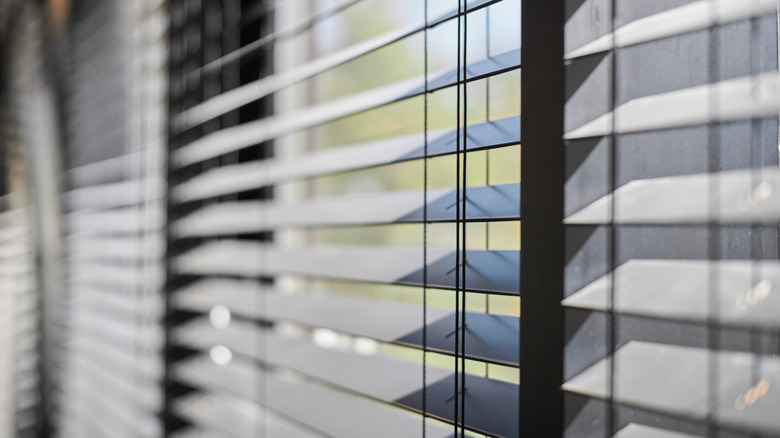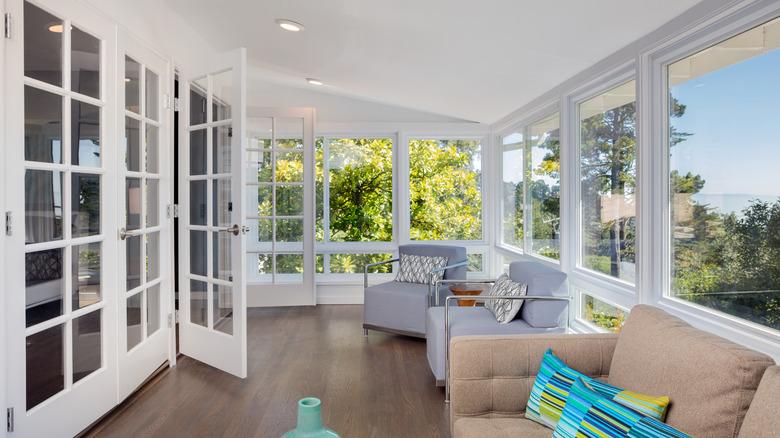How To Choose The Best Blinds For Your Sunroom
Sunrooms are a grand addition to almost any home, but the upgrades don't cease after construction is complete! Incorporating the right window treatments can transform your sunroom from a blank canvas to a comfy, cozy outdoor escape. Blinds don't just serve an aesthetic purpose, they also give homeowners control over the amount of heat and sunlight that floods their space at any given time, which is especially useful during the hottest hours of the day and throughout the summer season.
Blinds also offer a sense of privacy, which is a great option for those wanting a quiet space to concentrate or meditate. In other words, blinds, along with other forms of window treatments, can make your sunroom feel like an extension of your home. Since it isn't cheap to build a sunroom, it should garner as much use as possible. With some industry know-how and an added personal touch, you can easily turn your sunroom into one of your favorite spots in the house — here's how to choose the best blinds for your sunroom.
Consider your sunroom's location
A sunroom is similar to a front or back porch, except it's enclosed by glass panels on at least three sides. Sunrooms are traditionally added to the back of a home, but the direction your home faces greatly impacts the amount of sunlight it will receive. Before investing in window treatments, determine whether your sunroom faces north or south.
North-facing sunrooms tend to experience temperate summers, but are difficult to warm up during the winter months. The opposite rings true for south-facing sunrooms; winters for these rooms are toasty, while summers are intense. South-facing sunrooms are normally preferred over north-facing sunrooms since they receive more warmth and sunlight throughout the course of the year.
The region you live in also impacts the feel of your sunroom, since some parts of the country see more sunny days. If your sunroom faces south and you are averse to high heat and stuffiness, this may be a sign to invest in thicker window treatments that do a better job of keeping the heat out.
Weigh your blind options
There are several types of blinds homeowners can choose from when they design a sunroom, including, vertical, cellular, and mini blinds. Vertical blinds are commonly seen adorning sliding patio doors but could make a worthy addition to a sunroom, as well. This style isn't the best at blocking out heat, so they are a better option if you live in a milder climate or have a sunroom that faces north.
Cellular blinds are sleek, and inconspicuous, and offer a modern feel to your sunroom. They're recommended for those with south-facing sunrooms, or sunrooms that receive excessive amounts of heat and sunlight. Because they consist of two pieces of fabric, they also offer some noise-reducing qualities, which could prove useful if you have noisy neighbors or heavy traffic.
Mini blinds are designed with smaller-than-average slats that are also adept at keeping out unwanted heat and sunlight. This style may work best for those craving additional privacy inside their sunroom, or for those wanting blinds that are easy to keep clean. Sunroom blinds are available in plastic and wood, with plastic being the more cost-efficient. Moreover, when choosing from wooden designs, consider faux wood styles over real wood, since natural wood is subject to cracking and damage when exposed to direct sunlight.


